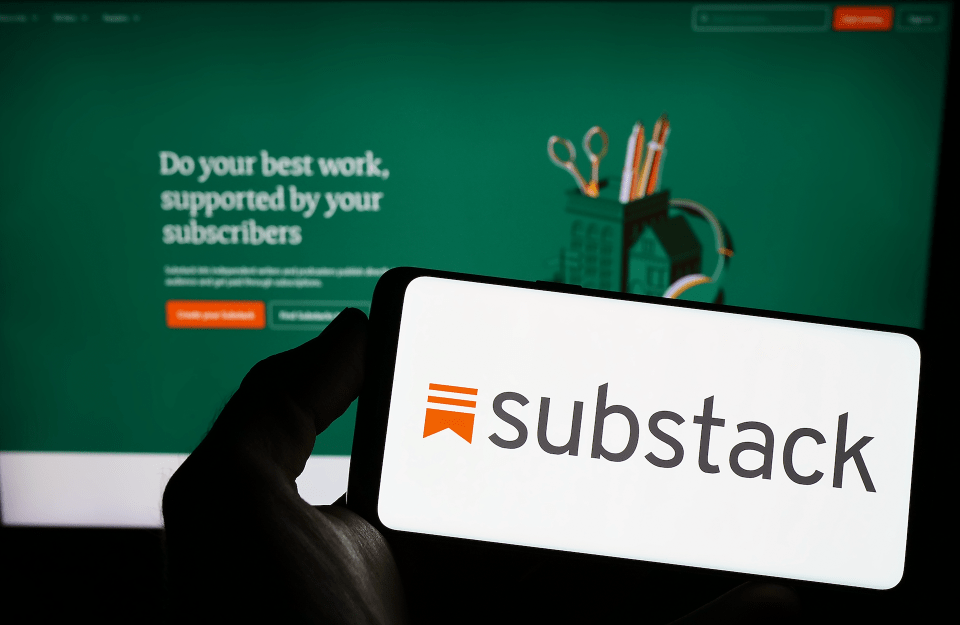Writers of Color Are Leaving the Journalism Industry for Substack. Is It Better There?
Postdoctoral Fellow Nelanthi Hewa spoke to writers and journalists of color about their experiences on the email newsletter platform Substack.

Substack, a subscription-based online newsletter platform, has been touted as a potential savior of journalism. In a precarious industry where full-time jobs are sparse, the platform allows writers to create and send newsletters directly to readers, who pay for the publication at a fee set by the writer, of which Substack takes 10%.
In a new paper, published in Communication, Culture and Critique, Annenberg School for Communication postdoctoral fellow Nelanthi Hewa and University of Toronto Associate Professor Nicole S. Cohen explore if the Substack-model is a viable alternative to traditional newsrooms for writers of color who often face racism and exclusion in the industry.
The researchers spoke to 11 journalists and writers of color in the United States and Canada about their experiences on Substack and similar newsletter platforms.
"Our interviews with writers revealed a nuanced and somewhat ambivalent picture of the journalism industry and people of color’s place within it,” says Hewa, lead author of the paper. “While Substack and other online newsletter platforms offer editorial freedom and space for writers of color to build community outside of a largely white and restrictive news industry, they don’t fix systemic inequities in journalism or offer financially sustainable careers for most.”
Exit from Traditional Media
In their conversations with writers, Hewa and Cohen found that, again and again, writers started newsletters to have a space to write about anything they wanted, especially about race, free from the constraints of newsroom policies or editorial boards.

“Newsletters enable writers to claim space to write about issues of race and anti-racism, regardless of the ‘beat,’ be it local news or pop culture,” the authors write. “They don’t need to temper, downplay, or hide race as part of their identities.”
This freedom comes with a catch, however, writers told Hewa and Cohen. When writing a newsletter, individual writers can’t rely on the name recognition of a big media outlet to get readers or subscribers; they have to cultivate a public persona, which can be exhausting and take away time from writing.
And though Substack and other newsletter platforms allow writers to make money, most writers Hewa and Cohen spoke to said they didn’t expect to make a living from their newsletters — it is not “a secure alternative to a journalism job.” In fact, most writers told them that their newsletters are a “side hustle” or a “passion project” that they write for personal fulfillment.
Community and Safety
Substack and other online newsletter platforms build on decades of “direct author-to-reader writing,” the authors point out — from photocopied zines to mail-order chapbooks. Since photocopiers enabled regular people to mass-produce printed content, writers of color have used publications to unite members of marginalized communities.
Online newsletter platforms provide a similar opportunity for building community; many writers of color told Hewa and Cohen that part of the reason they created newsletters was to bypass traditional social media platforms, where they face more frequent and intense harassment than white journalists and writers.
“A closed space that functions as an intimate community, in combination with Substack’s ability to let readers respond directly and privately to writers, creates a community for writers of color that allows them to, as one participant puts it, ‘talk directly to people that wanted that content’ in a way that enables greater honesty than a newsroom and greater safety than social media platforms,” the authors write.
Paradoxically, this same medium that affords these writers the ability to “build a community of like-minded people with shared expectations” allows others to publish newsletters platforming the white supremacist ideas that play into the harassment of writers of color online, something that has embroiled Substack in controversy.
Not Journalism’s Savior
Overall, the writers that Hewa and Cohen interviewed have had mixed experiences with online newsletters. Some writers found Substack and other platforms refreshing, while others saw it as an extension of an industry that holds writers of color back.
“Ultimately, we find that platform-based newsletters are not a neat break from existing power structures in contemporary media,” Hewa and Cohen write. “Rather, Substack should be viewed as an extension — or a parallel track — of the industry it claims to be saving.”



